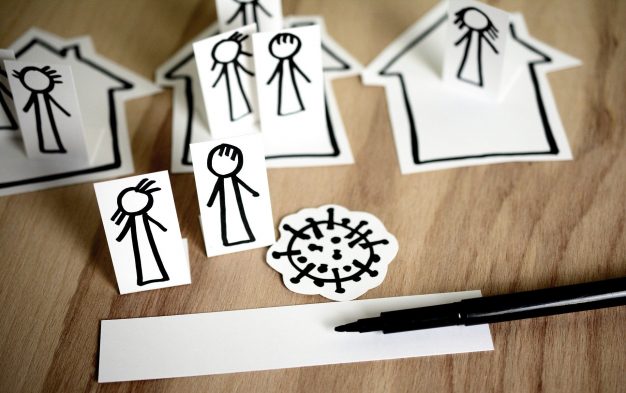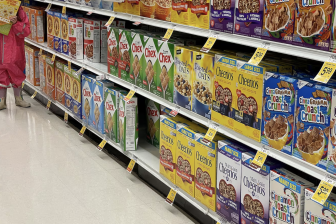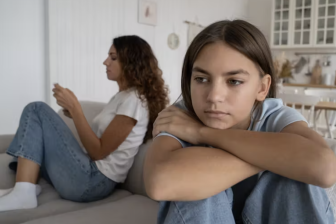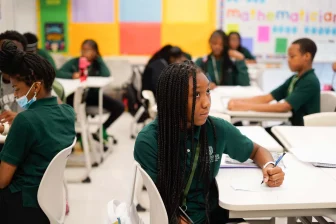
COVID school closures ‘most harm students from poorest neighbourhoods’
Pandemic-related school closures are deepening educational inequality in the USA by severely impairing the academic progress of children from low-income neighbourhoods, according to a new study at Yale University.
These closures, it adds, have ‘no significantly detrimental effects’ on students from the county’s richest communities.
Researchers examined the consequences of extended school closures for high school students and found that children living in the poorest 20 per cent of US neighbourhoods will experience the most negative and long-lasting effect of school closures.
The model they used predicted that one year of school closures will cost those in the ninth grade – ages 14-15 – in the most deprived communities a 25 per cent decrease in their post-educational learning potential – even if followed by three years of normal schooling. By contrast, the model shows no substantial losses for students from the wealthiest 20 per cent of neighbourhoods.
‘Deepening educational inequality in the US’
This working paper was supported by the National Bureau of Economic Research and co-written by Fabrizio Zilibotti, an economist at Yale, along with Francesco Agostinelli of the University of Pennsylvania, Matthias Doepke of Northwestern University, and Giuseppe Sorrenti of the University of Amsterdam.
Zilibotti, Professor of International and Development Economics in Yale’s Faculty of Arts and Sciences, said: “The American educational reformer Horace Mann called schools ‘the great equalizer’ as they provide a single learning environment where kids from different socioeconomic backgrounds can mingle and flourish. But the long periods of school closure during the COVID-19 pandemic deprive children of the equalizing force of education. Our analysis shows the pandemic is widening educational inequality and that the learning gaps created by the crisis will persist as students progress through high school, putting their future prospects at risk.”
The team built a quantitative model that uses pre-pandemic educational data to estimate how children learn in normal circumstances. They then analyzed how several COVID-19-related factors — including the switch to virtual learning, the loss of interaction with peers and friends, and the role parents play in educating their kids remotely — will affect student outcomes. As a baseline they measured the effects of the pandemic on the learning of ninth graders across the socioeconomic spectrum. From there, they simulated how these impacts will affect educational progress as the children move through high school.
Students will recover some of these deficits
For ninth-graders living in the poorest neighbourhoods, the loss of skills due to remote learning translated into a decline of about a half a point of the standard four-point grade point average — a child who earned straight Bs pre-pandemic now would get Cs in half of their subjects, the researchers said. Students will recover some of these learning deficits by the end of high school, but more than half of the education gap accrued during the crisis will persist, according to the study.
In the most affluent neighbourhoods, however, the researchers found no learning losses; they even observed a slight improvement in the top decile of neighbourhoods relative to the baseline. In these neighbourhoods, the negative consequences of remote learning are offset in part by increased parental investment — wealthy parents have the time and resources to support virtual schooling unavailable to poorer parents.
While each of the analyzed factors contribute to growing educational inequality, the researchers determined that peer effects had the largest impact. While students from wealthy communities gain from having contact with similarly advantaged peers during school closures, those living in poorer neighbourhoods lose the benefit of mingling with children from different socioeconomic backgrounds, the researchers explained. If these peer effects were unaltered by the pandemic, it would reduce the change in educational inequality across richer and poorer neighbourhoods during the pandemic by 60 per cent, the researchers concluded.
Peer interactions are a crucial ingredient
“Especially in older children, peer interactions are a crucial ingredient in academic success,” said Zilibotti. “We found that the inability to be with friends and mingle with peers from different socioeconomic groups did more damage to children’s educational progress than any other factor, including virtual learning. It underscores the importance of having kids from across the socioeconomic spectrum learning together.”
The development of a quantitative model was important because there was no comparable pandemic in the recent past to provide insight into how different groups of students will fare relative to others, Zilibotti said.
“Our analysis can guide policymakers as they consider how much priority to give to opening schools relative to other economic sectors,” he added. “Our results show which groups of students will benefit most from returning to in-person schooling and they suggest that some of the pandemic’s impact could be mitigated once COVID-19 is under control by shortening the summer break or provided increased service to disadvantaged students.”




